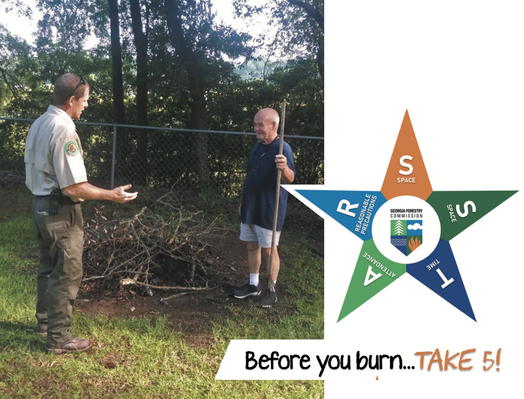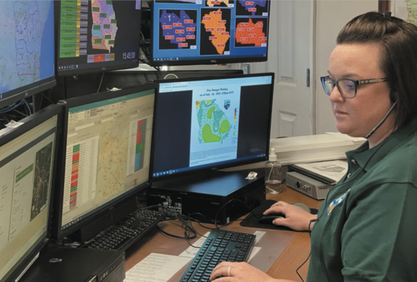Read Before Burning
Georgia’s Changing Burn Notification Laws
By Stasia Kelly
Fall 2021
 GFC Bleckley/Pulaski Chief Ranger David Brown discusses outdoor burn notification changes with landowner George Grimsley in Hawkinsville, GA.
GFC Bleckley/Pulaski Chief Ranger David Brown discusses outdoor burn notification changes with landowner George Grimsley in Hawkinsville, GA.
 GFC Response Center Manager Erica Stinson monitors wildfire activity and communicates with air and ground resources using modern mapping and communication tools.
GFC Response Center Manager Erica Stinson monitors wildfire activity and communicates with air and ground resources using modern mapping and communication tools.
|
Georgia Forestry Magazine is published by HL Strategy, an integrated marketing and communications firm focused on our nation's biggest challenges and opportunities. Learn more at hlstrategy.com
|
